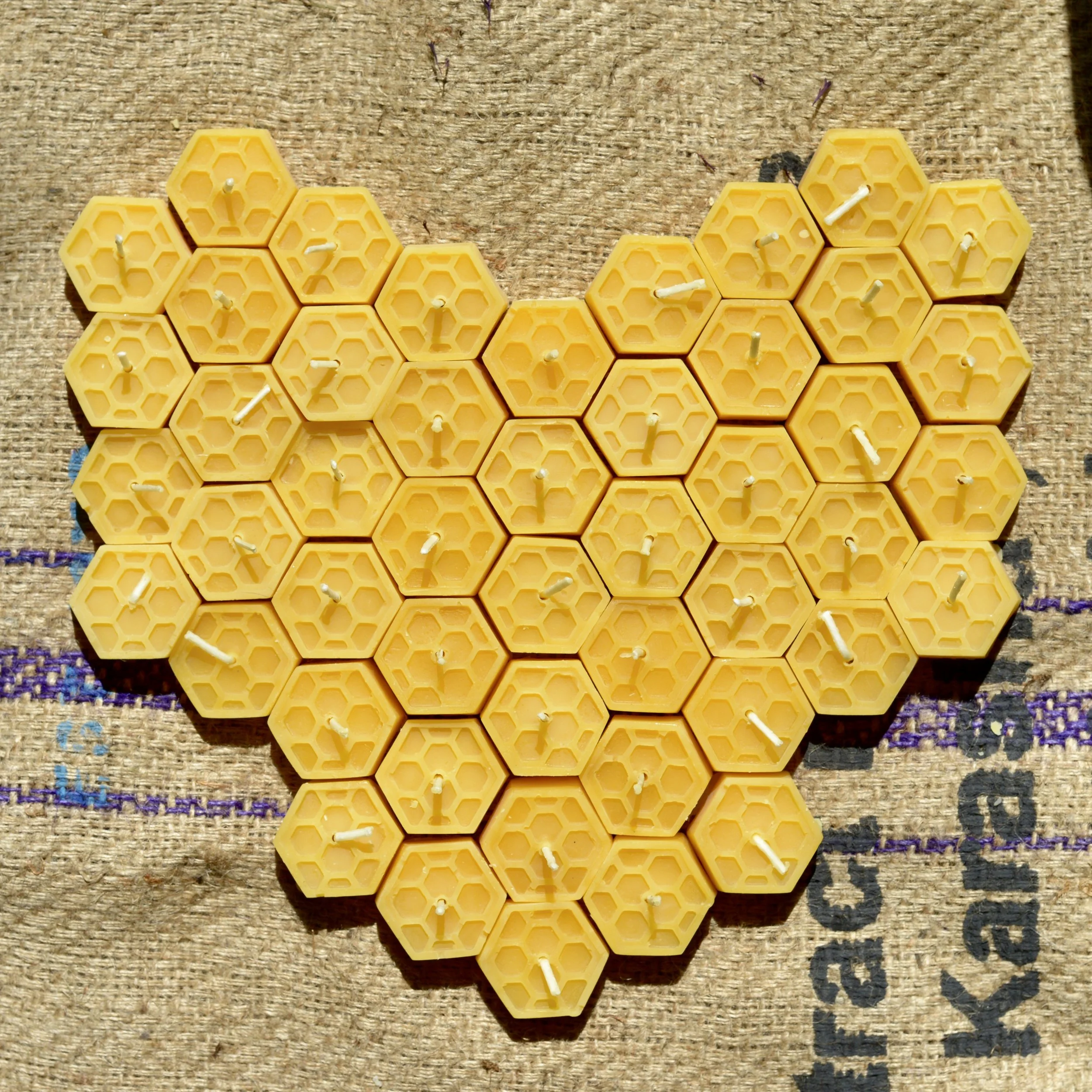Why Beeswax?
Beeswax is the most eco-friendly of all waxes used in candle production. Beeswax is a product that is not re-used by the bees and left to nature would be left to the wax moth to de-stash.
Beeswax candles may seem expensive, but they burn more slowly than paraffin candles, and even better, beeswax candles burn with almost no smoke or scent and clean the air by releasing negative ions into the air. These negative ions can bind with toxins and help purify the air.
Beeswax candles are said to be especially helpful for those with asthma or allergies and effective at removing common allergens like dust and dander from the air.
Why not vegetable wax?
Soya/rapeseed/palm - I think the world has woken to the palm oil crisis, but the reality is the soya bean crisis (yes there is one) is yet to hit the headlines.
Soy wax is often described as an ‘eco’ wax - just saying eco doesn’t do it when it comes to soy. A soy plant is natural, but soy wax is not. To obtain wax the husk must be subject of several chemical processes to obtain the wax and often blended with other waxes to help burn efficiently.
The impacts of soy are huge : Deforestation, land and habitat loss, carbon capture and sequestration oil erosion, water availability, modern farming and agrochemicals and monocultures - soy is wind pollinated so gives nothing to the pollinators and can be heavily treated with pesticides contributing to the decline of our pollinators.
In reality paraffin wax could be considered to have better credentials than some waxes when used for candles, but one thing you cannot ignore is the toxicity of burning paraffin, especially

